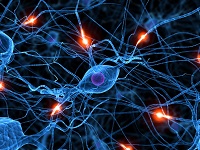ACADEMIA
The study of the signals emitted by the brain, investigated the UDC to fight epilepsy
A model that provides new ways of classifying signals from the brain to expand knowledge of the scientific community about epilepsy is currently the main line work of Professor Daniel Cebrian Rivero, a member of a research group University of A Coruña led by Professor of Computer Science and Alejandro Pazos Sierra Artificial Intelligence. His work of identifying signals brain may have future applications, such as overcoming barriers communication or travel by persons with disabilities.
Epilepsy is a chronic disease to one or several neurological disorders leaves a predisposition in the brain to cause seizures and short-term crisis, and in which the signals emitted by the brain in such cases can be identified in a electroencephalogram: an exploration in which bioelectric activity is recorded brain.
The model designed by Rivero in the group of Artificial Neural Networks and Systems UDC adaptive analyzes the signals from brain activity in the electroencephalograms in a new way and can detect those key for diagnosis or treatment of epilepsy, improving the success rate existing systems. The calculations required to develop the modeling is performed at the Supercomputing Center of Galicia (CESGA).
Artificial Neural
The operation of the model can also be very useful in the future for signs characteristics of other diseases or to "work with people with disabilities motor, "says the professor. In the latter case, if the signals are correctly identified produced by the brain to certain situations in the future a person who had difficulty moving or communicating "could move a wheelchair with the thought or use a computer to communicate through it. "Rivero stresses that studies in this area are being made "in many universities and results quite encouraging. "
The investigator is also working on the development of artificial neural networks by evolutionary computation techniques, a topic that was the subject of his doctoral thesis and in whose research also used the computing power of CESGA for construction and analysis models.
These networks are systems designed to solve problems classification or regression prediction, among others. For more information, contact: Daniel Rivero Cebrián 981 167 000 ext. 1302 drivero@udc.es {modal url=http://www.supercomputingonline.com/images/redneuronal.jpg}
 {/modal}
{/modal}
